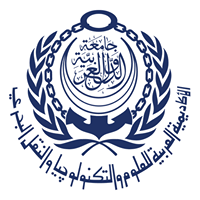اشترك بالحزمة الذهبية واحصل على وصول غير محدود شمرا أكاديميا
تسجيل مستخدم جديدRobust quantum state recovery from amplitude damping within a mixed states framework
101
0
0.0
(
0
)
اسأل ChatGPT حول البحث

ﻻ يوجد ملخص باللغة العربية
Due to the interaction with the environment, a quantum state is subjected to decoherence which becomes one of the biggest problems for practical quantum computation. Amplitude damping is one of the most important decoherence processes. Here, we show that general two-qubit mixed states undergoing an amplitude damping can be almost completely restored using a reversal procedure. This reversal procedure through CNOT and Hadamard gates, could also protect the entanglement of two-qubit mixed states, when it undergoes general amplitude damping. Moreover, in the presence of uncertainty in the underlying system, we propose a robust recovering method with optimal characteristics of the problem.
قيم البحث
اقرأ أيضاً
Quantum entanglement is a critical resource for quantum information and quantum computation. However, entanglement of a quantum system is subjected to change due to the interaction with the environment. One typical result of the interaction is the am
plitude damping that usually results in the reduction of the entanglement. Here we propose a protocol to protect quantum entanglement from the amplitude damping by applying Hadamard and CNOT gates. As opposed to some recently studied methods, the scheme presented here does not require weak measurement in the reversal process, leading to a faster recovery of entanglement. We propose a possible experimental implementation based on linear optical system.
We study information transmission over a fully correlated amplitude damping channel acting on two qubits. We derive the single-shot classical channel capacity and show that entanglement is needed to achieve the channel best performance. We discuss th
e degradability properties of the channel and evaluate the quantum capacity for any value of the noise parameter. We finally compute the entanglement-assisted classical channel capacity.
The increasing interest in using quantum error correcting codes in practical devices has heightened the need for designing quantum error correcting codes that can correct against specialized errors, such as that of amplitude damping errors which mode
l photon loss. Although considerable research has been devoted to quantum error correcting codes for amplitude damping, not so much attention has been paid to having these codes simultaneously lie within the decoherence free subspace of their underlying physical system. One common physical system comprises of quantum harmonic oscillators, and constant-excitation quantum codes can be naturally stabilized within them. The purpose of this paper is to give constant-excitation quantum codes that not only correct amplitude damping errors, but are also immune against permutations of their underlying modes. To construct such quantum codes, we use the nullspace of a specially constructed matrix based on integer partitions.
We discuss a method to construct quantum codes correcting amplitude damping errors via code concatenation. The inner codes are chosen as asymmetric Calderbank-Shor-Steane (CSS) codes. By concatenating with outer codes correcting symmetric errors, man
y new codes with good parameters are found, which are better than the amplitude damping codes obtained by any previously known construction.
Quantum states are the key mathematical objects in quantum mechanics, and entanglement lies at the heart of the nascent fields of quantum information processing and computation. What determines whether an arbitrary quantum state is entangled or separ
able is therefore very important for investigating both fundamental physics and practical applications. Here we show that an arbitrary bipartite state can be divided into a unique purely entangled structure and a unique purely separable structure. We show that whether a quantum state is entangled or not is determined by the ratio of its weight of the purely entangled structure and its weight of the purely separable structure. We provide a general algorithm for the purely entangled structure and the purely separable structure, and a general algorithm for the best separable approximation (BSA) decomposition, that has been a long-standing open problem. Our result implies that quantum states exist as families in theory, and that the entanglement (separability) of family members can be determined by referring to a crucial member of the family.
سجل دخول لتتمكن من نشر تعليقات
التعليقات
جاري جلب التعليقات


سجل دخول لتتمكن من متابعة معايير البحث التي قمت باختيارها


